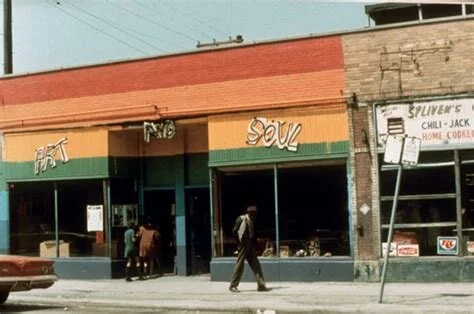Sculpting Space Week 10+11
Rebecca Zorach's examination of the Art & Soul project peaked my interest in this week's reading because of its specific orientation towards curatorial social practice. Before this reading, I had no idea that the Vice Lords(or Conservative Vice Lords) and the MCA had a connection. Given recent controversy within the past year with Black artists and the MCA Chicago, the awareness of this history strikes a sharp contrast to what appears to be a point of contention today. To clarify, during a period of social reckoning last year, MCA Chicago was called out for a vastly imbalanced wealth and status disparity among staff. Most front-of-house and lower-wage stage were/are African American, where most of the upper managerial staff were/are white. Just as the time during the Art & Soul collaboration, the nation was shifting towards recognizing societal wounds of white supremacy; I find the parallel between these two events uncanny.
Under the umbrella of The Black Arts movement, Art & Soul functioned to amplify Black art in Black spaces, leveraging the communal support of neighborhood leadership. This may be naively ideal, but I love the idea of gang reunification with Black-led movements. We often forget that at some point, gangs were established to offer protection and unity for Black communities against the violence of outsiders. As American society examines its current relationship with policing, I think it's worthwhile to look into previous efforts to merge the world's community restoration and existing neighborhood entities such as gangs.
Another connection I enjoyed seeing in Zorach's writing was the mention of Tania Bruguera's Arte d Conducta. The similarities in which MCA, CVL, and westside businesses merge and blur lines represent what Bruguera accomplished in Cuba. This form of socially engaged art essentially works to decolonize space by bringing in people who typically would never have access. Gatekeepers are removed, and the notion of "art" is redefined by new participants.
Art & Soul exterior with Rainbow mural by Sachio Yamashita, 1969 (mural now destroyed) (mural artwork © Eileen Petersen Yamashita, all rights reserved, used with permission; photograph © Ann Zelle)
